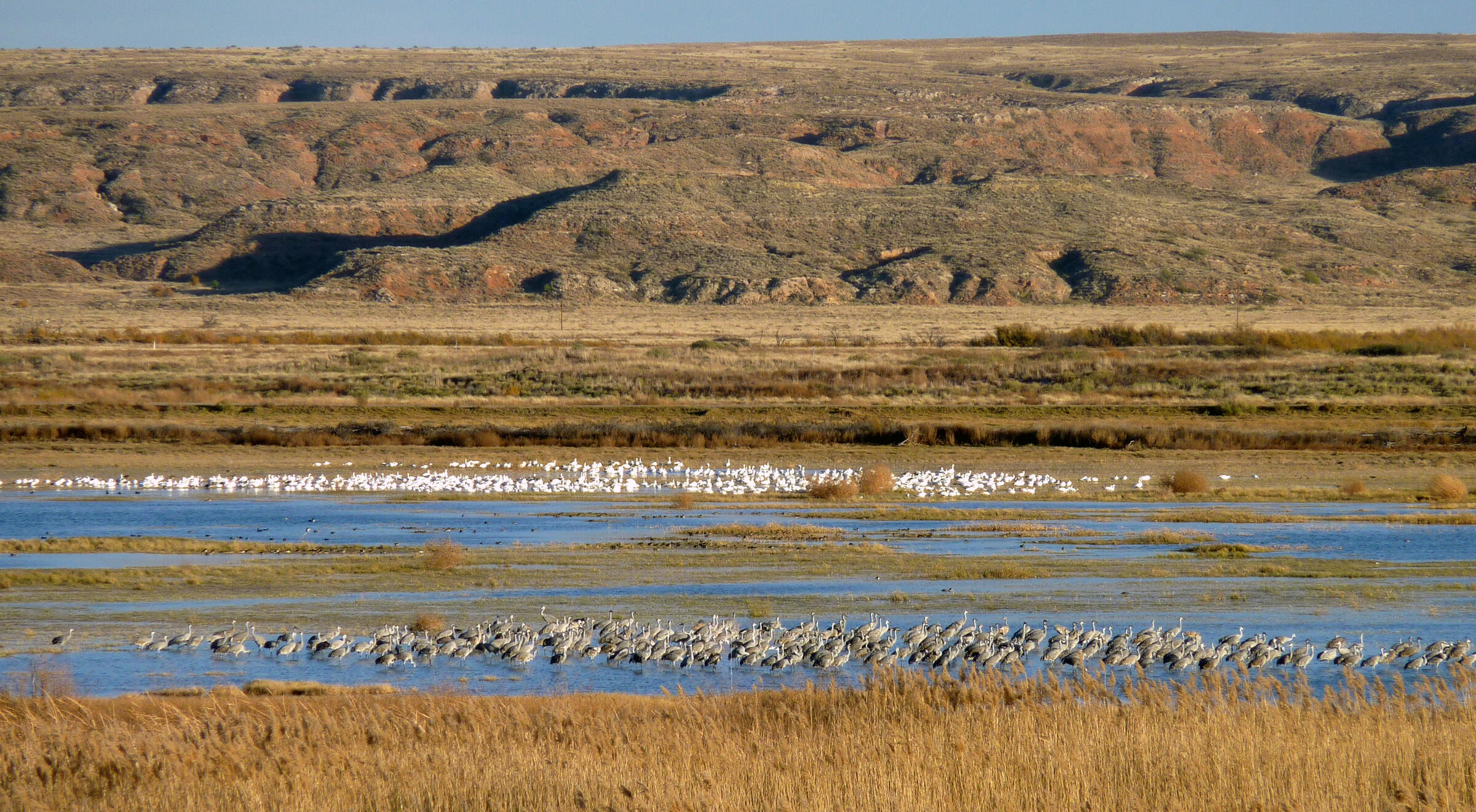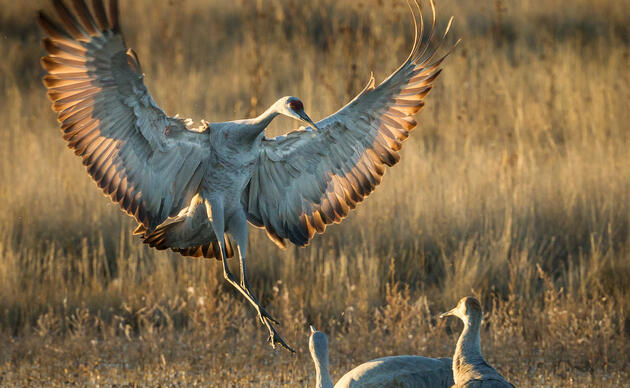Favorite birding spots with biological significance already recognized by Audubon New Mexico as state Important Bird Areas (IBAs) recently received international recognition as Global IBAs! All part of the Rio Grande basin, Bitter Lake National Wildlife Refuge in Chaves County, Bosque del Apache National Wildlife Refuge in Soccoro County, and the Ladd S. Gordon Waterfowl Complex in Valencia and Socorro Counties (composed of the Belen, Casa Colorada, Bernardo, and La Joya Waterfowl Areas) all provide critical habitat to Sandhill Cranes, migratory and wintering waterfowl, and many other species. Sites only receive this designation when they meet or exceed established criteria such as thresholds for bird species of global conservation concern, an assemblage of restricted-range or biome-restricted species, and/or aerial bottlenecks for migratory waterbirds.
Bitter Lake National Wildlife Refuge
Global IBA Ornithological Summary: Approximately 15 pairs of Black-necked Stilt, 45 pairs of American Avocet, 5 pairs of Least Tern, and 60 pairs of Snowy Plover nest on the refuge. Migrating populations of Wilson's Phalarope peak near 600 birds in spring and 500 in fall. Duck populations peak in the fall at 6000-10,000 with Northern Pintail comprising half that number. Migrants include 8000 Snow and Ross' geese and 4000 Sandhill Cranes. All of the above bird activity is centered around 500 acres of natural and artificial wetlands.
Bosque del Apache National Wildlife Refuge
Global IBA Ornithological Summary: Over 340 species of birds live at this refuge. During winter, there are huge flocks of Snow Geese and Sandhill Cranes; dabbler ducks abound (35,000+); Black-throated and Sage Sparrows can be found in the drier areas; and raptors including Bald Eagles and Ferruginous Hawks are present. During summer look for Vermilion Flycatcher and Lucy's Warbler (both at the northern edges of their ranges), Lesser Nighthawk, Yellow-billed Cuckoo and Southwest Willow Flycatcher. Migration brings shorebirds as well as migrating passerines. During the period 1995-2002 in winter for wading birds (primarly Sandhill Cranes) there were 10,096 individuals average and 12,290 individuals maximum. During the same period in winter for water birds there were 43,120 individuals average and 59,529 individuals maximum.
Ladd S. Gordon Waterfowl Complex along the Rio Grande and just north of Bosque del Apache shares similar ornithological importance as a resting and feeding area for thousands of ducks, geese, and cranes during migration and winter.
How you can help, right now
Join the Western Water Action Network
Receive action alerts about water issues, and issues that are affecting birds across the arid West.
Donate
Help secure the future for birds at risk from climate change, habitat loss, and other threats. Your support will power our science, education, advocacy and on-the-ground conservation efforts.
Nina Mason Pulliam Rio Salado Audubon Center
Visit the Nina Mason Pulliam Rio Salado Audubon Center in Phoenix, Arizona.




